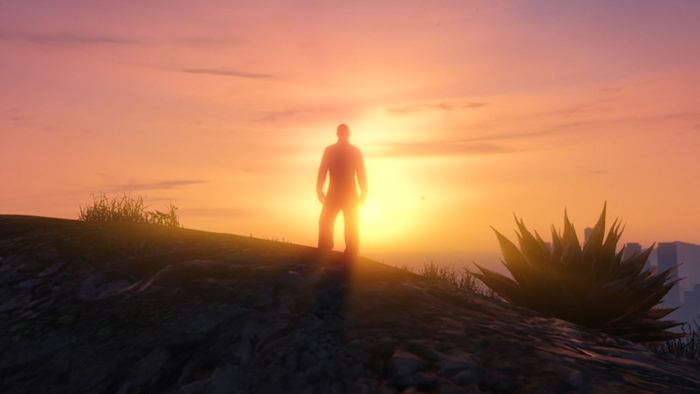In seeking out the future of European art, this survey of emerging artists from across the continent finds a generation preoccupied by the past. That all of its 21 artists were born after 1980 – and so came of age in the years following the ‘end of history’, the reunification of Germany and the Maastricht Treaty’s commitment in 1992 to pursue ‘ever closer union among the peoples of Europe’ – might go some way to explaining, given how well the utopian spirit of those times is playing out, why they prefer to look backward rather than forward.
The catalogue states that research for the show began ‘without any preconceived ideas or guiding principles’, but it’s clear from the first room that some themes soon emerged. Chief among them, as the Ovidian title suggests, is the practice of recycling and renovating found materials and forms: Italian design studio Formafantasma have built a suite of office furniture from electronic waste; Nika Kutateladze has shipped an abandoned wooden house from her native Georgia and reconstructed it in the gallery; the Amsterdam-based artist Tenant of Culture has bundled old rucksacks and windcheaters into normcore sculptures that resemble ragbag art students outside a South London pub.
So far, so right-minded: in an age of excessive consumption and catastrophic waste, the onus is on finding creative ways to repurpose existing materials while drawing attention to what has been lost. Yet Marion Verboom’s assembled totem poles are more problematic, given that the cultural hybridisation her hotchpotch of symbols seems to celebrate – in which minority belief systems adapt to dominant ideologies to survive – has historically taken place under different circumstances than this kind of postmodernist free play implies. There are similarly uncomfortable echoes of primitivism in John Skoog’s videowork Federsee (2013), which follows the masked celebrants of a German town festival dating back to the Middle Ages, and Evgeny Antufiev’s quasi-anthropological artefacts, including a ceramic-and-copper fetish object (Untitled, 2017) that looks as if it has recently been excavated at an archaeological dig.
The voguish reverence for arcane or indigenous forms of knowledge that have been crowded out by modernity – including spiritualism, animism or witchcraft – is typically figured as a rejection of the authoritarian structures embedded in established systems of belief. But it also raises questions about the relationship between a pancontinental ‘artworld’ and the ‘local’ traditions and subcultures to which its practitioners are increasingly drawn, and which some might argue are threatened by the homogenising forces of which these artists are – as part of an educated, cosmopolitan and mobile minority – the representatives. That they apply similar methodologies to diverse source materials can be read either as an invigorating cross-pollination of folk and official cultures or as the triumph of a dominant academic style; either way the exhibition succeeds in dramatising some of the tensions between local and international that have recently undermined the European project.
Its failure to put forward a compelling vision of progress is equally of the zeitgeist, and Kris Lemsalu’s absurdist rowing boat adrift on a sea of blue balloons feels well attuned to the prevailing hopelessness. Downstairs, the refreshing hint of anarchy introduced by the Estonian artist’s assemblage paintings – in which figures composed of ceramic trainers, unzipped trousers and vagina dentata trample over clichéd images of the American wilderness – is undermined by the grating whimsy of Daniel Abrantes’s A Brief History of Princess X (2016), which describes a wall-text-depth narrative of Brancusi’s phallic sculpture through re-enactment and voiceover. Nonetheless, the video’s lament on the affectations surrounding institutionalised art were confirmed by the woman who sat down next to me and, in response to the sculpture’s appearance onscreen, sighed with the air of a devotee, ‘Oh, I do love Giacometti, I really, really do.’
The ‘heroic era’ of Modernism also informs Klára Hosnedlová’s stage set, which rewardingly combines a stated indebtedness to the architectural austerity of fellow Moravian Adolf Loos with the historically gendered crafts of embroidery and costumery. Yet Kasper Bosmans’s heraldic paintings and Charlie Billingham’s Regency pastiches had me worrying again about whether the abundant revivalism is indicative of a wider nostalgia for feudal or aristocratic social models, however much the artists affect to ‘play’ with and update the symbology of bygone eras. George Rouy’s artful neoclassical paintings, meanwhile, are unabashed homages to the neoclassical ‘return to order’ in European painting after the end of the First World War, most obviously Picasso’s fulsome and monumental female figures. The cumulative impression is that the possibility of a break from the past – the customary clarion call of young people – is to this generation a frightening prospect.
That anxiety manifests in different ways, from Lap-See Lam’s intelligently written and executed fictional video histories of the Chinese diaspora in Stockholm to the moralising condescension of Magnus Andersen’s variations on the work of Thomas Gainsborough and Joshua Reynolds, but only Jonathan Vinel’s Martin Pleure (2017) captures the anomie of those who feel disinherited and disenfranchised. The adolescent narrator of this composite of digitally animated scenes from the videogame Grand Theft Auto V (2013) moves through a hostile urban landscape, stealing cars, fighting the police and leaving forlorn voice messages for a girl called Luna and a series of friends, none of whom return his calls. The scenario sets up the lead character to resemble a conventional masculine hero – maverick, self-reliant, individualistic – before revealing him to be in mourning for a lost community.
Metamorphosis. Art in Europe Now, Fondation Cartier, Paris, 4 April – 16 June 2019
From the May 2019 issue of ArtReview
